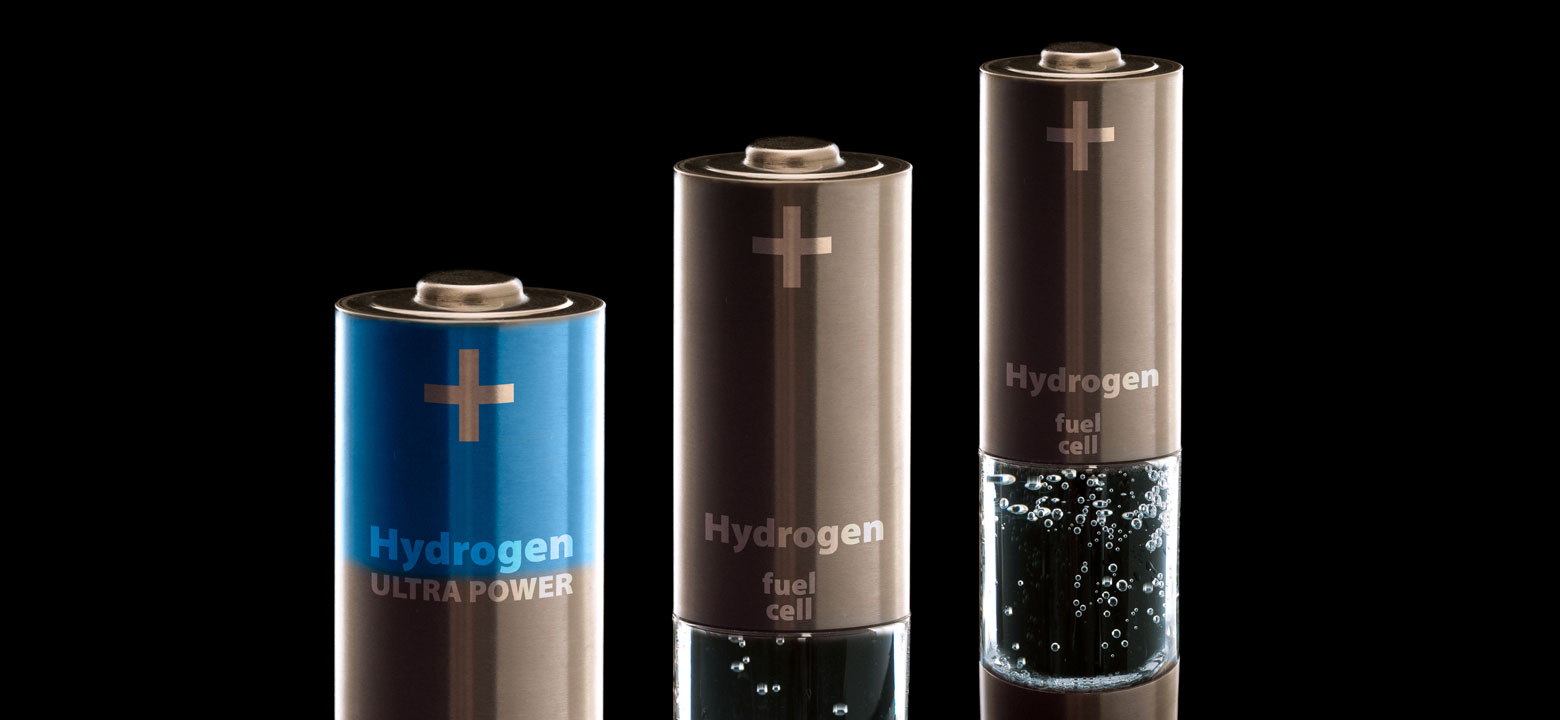
Lithium-ion batteries are pretty ubiquitous. They're in computers and cell phones, but are increasingly being used for any application where it's necessary to store power—even the renewable energy field. Unfortunately, lithium is a finite resource. There's only so much of it, and extracting it takes a considerable environmental and humanitarian toll. The good news is, there are multiple alternatives to using lithium-based batteries. Some of them may even prove to be superior to what we're working with now.
Hydrogen has generated a lot of buzz due its potential as everything from renewable energy storage to jet fuel. It's fairly easy to store and transport, and very clean. When burned, all it produces is water vapor. Some companies are even working on using excess solar or wind power to produce hydrogen, allowing them to store this extra energy for low production times.
Unfortunately, hydrogen comes at a cost. It's made by electrolysis, in which an electrical current is passed through water to split it into oxygen and hydrogen. This requires an existing source of power. While it certainly can be made using renewable energy, the vast majority is still coming from fossil fuels. That means that, for the time being, using hydrogen comes with a hidden carbon cost. Even if it doesn't produce harmful byproducts upon combustion, using coal to make it doesn't exactly make it “clean.”
Glass batteries are a kind of solid-state battery, which means that they use solid electrodes and electrolytes instead of gels or liquids. Glass serves as the electrolyte, while a thin foil of sodium or lithium makes up the anode. The cathode is carbon and ferrocene, manganese dioxide, or sulfur plated onto copper. It works well because the glass electrolyte allows the battery to charge without allowing metal dendrites to form like regular lithium-ion batteries do.
These batteries are much safer than conventional ones. The solid electrolyte keeps them from leaking “battery acid,” and there's virtually no risk of fire. They also have a much lower operating temperature, whereas lithium batteries stop functioning in very cold weather. There're only two downsides: These batteries are unlikely to become commonplace for many years, and several prototypes still rely on lithium.
Zinc has been studied as an alternative to lithium in battery production. It has a higher theoretical total volumetric capacity, and also tends to behave better with aqueous electrolytes. It's primary advantage is that it's much more abundant than lithium, so it's less expensive and easier to obtain.
Of course, simply swapping zinc for lithium isn't as easy as it seems. These batteries generally have lower faradaic efficiency, and can still form dendrites that lead to battery failure, shorts, and fires.
Interestingly, the best alternative to lithium batteries might not be batteries at all. Graphene is a type of honeycomb-shaped carbon. It functions as a very efficient semiconductor, but could also make a very interesting supercapacitor.
Supercapacitors are superior to batteries in several ways. Even though you need a larger supercapacitor to hold the same amount of energy as a smaller battery, they charge and discharge much more efficiently. If they can be made of graphene, it'd be possible to trim some of the excess weight inherent in using a supercapacitor over a conventional battery.
The downside here is that this is all squarely in the realm of the theoretical for now. We aren't yet able to produce graphene in stable, commercially viable quantities, and it could be a long time before we can.
In concept, aluminum-graphite batteries are very similar to their lithium counterparts. The difference here is that the anode is made of aluminum instead of lithium. Aluminum batteries are more efficient than lithium, allowing devices to charge in seconds to minutes instead of hours. They also have a much bigger theoretical energy density potential.
So, why aren't we already using aluminum-graphite batteries? Simple: Even though they're made of cheaper, more abundant materials and can charge things much more quickly, their output is still dismally low. Researchers are working on improving this aspect, but it could be a while before this type of battery becomes a workable option.
When it comes to producing and storing power, batteries can't beat biology. Cells have evolved over millions of years to turn everything from heat, sunlight, and other cells into storable power. Bioelectrochemical batteries use bacteria that thrive in oxygen-poor environments to process acetate in a way that releases electrons. The anode chamber would provide a matrix for an anaerobic biofilm that serves as a way to potentially produce—not just store—electricity.
These batteries have a lot of potential because the anaerobic bacteria can be genetically tweaked to optimize efficiency. Some species, like Shewanella oneidensis, can convert toxic heavy metal ions into food, generating a current in the process. This method for power storage would be safer than using corrosive acids, have a lower potential for fire, and rely heavily on material capable of self-replicating. This could mean that these batteries have a nearly infinite lifespan, if they're treated properly.
This research is still in its infancy, but it's very promising so far. It'll be many years, if ever, before bacteria-based batteries find their way into commercial use.
Lithium has been an issue for a long time. It's difficult and dangerous to mine, produces a lot of harmful byproducts as part of its refinement, and isn't very abundant. While it may be several years before we're able to replace lithium batteries with better alternatives, researchers are working hard to develop superior energy storage technologies.